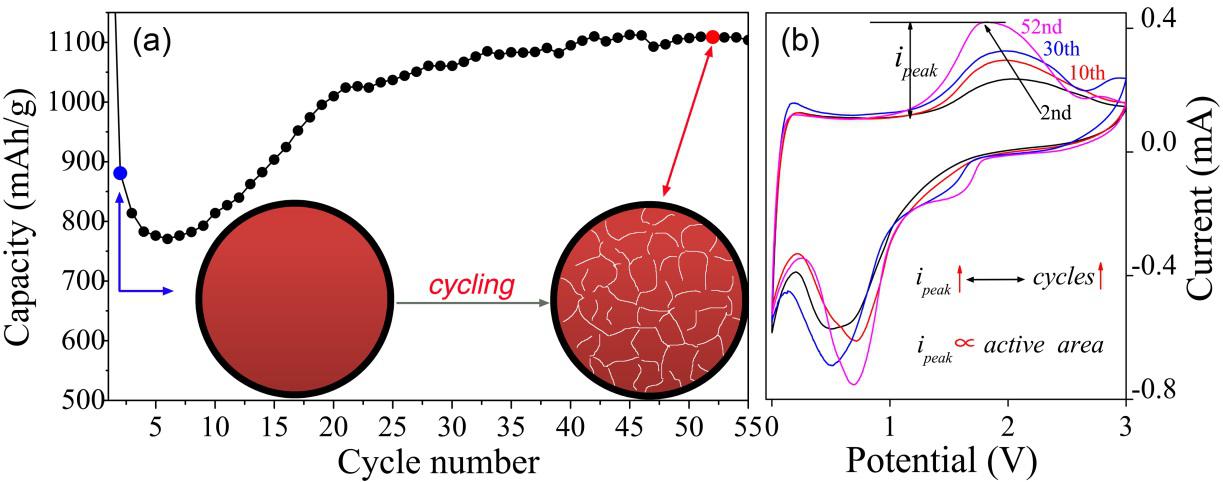
Figure 1 (a) Cycling performance of the γ-Fe2O3@C/MWNT electrode at the current density of 100 mA/g, the inset shows the schematic illustration of the electrode activation; (b) Representative CV curves of a γ-Fe2O3@C/MWNT electrode after different cycles. (Imaged by LIU Yongfei)
Rechargeable lithium-ion batteries (LIBs) are increasingly used for portable electronics, electric vehicles, and other applications. Since the commercial graphite anode material has already approached its theoretical limit (372 mAh/g), it is urgent nowadays to seek alternative anode materials with a high reversible capacity, a low cost, and a long life-time.
In this context, Fe2O3-based materials have emerged as promising candidates for next generation LIB anodes because of their high theoretical capacity (1007 mAh/g), low cost, and environmental acceptance. However, Fe2O3 electrodes suffer from poor electrical conductivity and severe capacity fading due to electrode pulverization during charge-discharge processes, which hinder their practical applications for LIBs.
Recently, Researchers from the institute of Solid State Physics, Chinese Academy of Sciences developed the facile and scale fabrication of core-shell structured γ-Fe2O3@C nanoparticle based composites incorporated with multi-walled carbon nanotubes (MWNTs). When tested as anodes for LIBs, such γ-Fe2O3@C/MWNT electrodes exhibit excellent cycling performance and monotonically elevated reversible capacity.
For instance, its capacity rises at a rate of ~6.8 mAh/g per cycle to 1139 mAh/g after 60 cycles at the current density of 100 mA/g (Fig 1a). By ex situ HRTEM examinations and cycle-dependent CV tests, researchers showed that the core-shell structured γ-Fe2O3@C nanoparticles transform into vesiculate structure without pulverization during the cyclic charge/discharge. As the vesiculate structure develops, the core-shell structured γ-Fe2O3@C/MWNT anodes are gradually activated. It was revealed that the activation of the electrode is closely related to the increase of active surface area arising from the gradual formation of vesiculate structure (Fig 1b).
The results are helpful to deepen understanding the activation mechanism of transition-metal-oxide anodes, and provide a significant guidance for designing and constructing new anode materials.
Related study findings were published in the Journal of Materials Chemistry A, entitled Electrode Activation via Vesiculation: Improved Reversible Capacity of [gamma]-Fe2O3@C/MWNT Composite Anode for Lithium-ion Batteries.
Contact:
Prof. QIN Xiaoying
Institute of Solid State Physics, Chinese Academy of Sciences
Hefei, Anhui 230000, China
Tel: 0551-65592750
E-mail: xyqin@issp.ac.cn